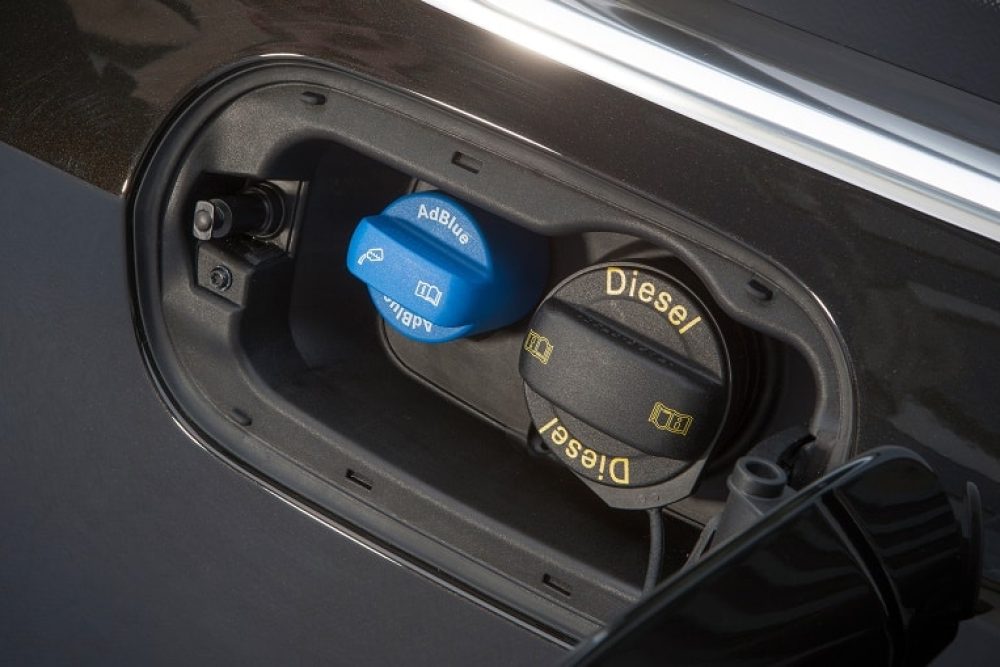What is AdBlue?
- The generic term is Diesel Exhaust Fluid (DEF)
- Injected into the exhaust, it will be used at a rate of around 5 litres per 100 litres of diesel
- It reduces diesel exhaust nitrogen oxide emissions by more than 90%
- Officially AdBlue is the registered trademark for Aqueous Urea Solution 32.5%, used with the Selective Catalytic Reduction system (SCR)
ADBLUE’S not just another blue fluid to keep a checking in your car, alongside the antifreeze and screenwash – and it cannot be taken for granted.
If you’ve found an extra filler in your new diesel company car, AdBlue is not just a diesel fuel additive replenished when your vehicle is serviced.
Run low – or worse, run out – and it could stop you in your tracks. But unlike some other checks, such as tyre pressures or tyre tread depth, at least you will get dashboard alerts.
If your diesel car is Euro 6 compliant, which keeps down your company car tax, AdBlue is an essential fluid used with the Selective Catalytic Reduction (SCR) system to reduce the exhaust emissions, and failing to maintain the system by the book will be seriously bad for the motoring element of your business.
‘How does it work?’ you might ask. Basically, what AdBlue does is converts more than 90% of harmful nitrogen oxide emissions into harmless nitrogen and steam and reducing these nitrogen oxides should lead to less pollution and smog in urban areas.
It’s not the only emission control feature and will often work in conjunction with a diesel particulate filter (DPF) that collects soot particles – but that’s another story.
Originally just seen in commercial vehicles, with diesel emissions targets becoming more stringent the AdBlue injection systems have now become a feature of modern diesel-powered cars and vans.
Here are six important facts about AdBlue:
1. Will I need to top up AdBlue tank between services?
The AdBlue tank will be refilled at every service, but the size of the tank will vary whatever vehicle you choose – therefore top-ups between services might be necessary, as indicated by dashboard warnings.
Other factors such as the mileage covered, journey types, driving style and environmental conditions will have an affect on how AdBlue is consumed by a Euro 6 diesel engine.
2. How do I find and fill the AdBlue tank?
Check your owner’s manual for the location of the AdBlue tank, although it is most likely to be located next to the fuel tank or under the rear floor in a car, with filler near the fuel filler, although the filler can be in the engine bay on a van.
AdBlue is very easy to use and is not a fuel or fuel additive, but a high purity urea solution. AdBlue is non flammable, and non-explosive, and considered a transportable fluid.
3. AdBlue needs to be handled with care
If handling AdBlue, wear suitable protective clothing such as rubber gloves and glasses.
AdBlue damages surfaces such as painted vehicle parts, plastic, items of clothing and carpets and should be removed as quickly as possible using a damp cloth and plenty of cold water. Any spillage can make a floor slippery and cause staining.
If AdBlue comes into contact with eyes and skin, rinse for at least 15 minutes with plenty of water and seek medical help.
If AdBlue is swallowed, wash the mouth with plenty of water for at least 15 minutes. Do not try to induce vomiting unless recommended by a doctor. Seek medical advice immediately.
AdBlue damages surfaces such as painted vehicle parts, plastic, items of clothing and carpets and should be removed as quickly as possible using a damp cloth and plenty of cold water. Any spillage can make a floor slippery and cause staining.







